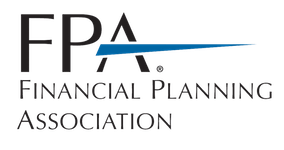One of the most common objectives, as it relates to financial planning, is planning for retirement. The question often comes up: “Do I have enough for retirement?” or “How do I know if I have enough for retirement?” Long gone are the days where you could work for a company and draw your pension and Social Security for the rest of your life. In today’s environment, you need to factor in the optimal filing strategy for Social Security after many proposed changes to the program over the last 30 years and several implemented with more likely on the horizon. You also need to figure out which accounts you will draw from and, most importantly, you need to determine what is an appropriate amount to save towards.
Common Rules of Thumb
A common rule of thumb is one called the 4% rule. This method simply involves drawing 4% from the sum of your investment portfolio. You can adjust this for inflation each year and it can be a good starting point for knowing if you have saved enough. Effectively, you could take your annual need and multiply this by 25 (or divide by 4%) and arrive at a target for your investment portfolio. As an example, if your annual need was $50,000 in today’s dollars, then you could consider a savings target of $1,250,000 ($50,000 x 25). This does not count in any other income sources like Social Security, but it gives you a good starting point.
Identify Objectives
The first step in determining whether you have saved enough for retirement is determining what you are trying to save for. How will your monthly expenses be different in retirement? Will you live in the same home? How will you handle health insurance costs? What other monthly expenses may be different?
What onetime expenses may you have? Will you need to do any home remodels? Will you desire to go on larger family vacations? Will you buy a second home? Will you buy an RV?
Once you’ve determined what your annual need is and what onetime expenses may exist, you have a starting point. A common number you will see thrown around for retirement spending is to plan to spend about 80% of your pre-retirement expenses in retirement. This is a fine rule of thumb for a starting point, but everyone’s situation is unique. Oftentimes, we will see clients spend more in their initial 10 years of retirement (the Go Go Years), then less in the next 10 years (the Slow Go Years), and finally, expenses increase again in the next 10 years for health costs (the No Go Years). David Blanchett, retirement researcher, calls this the retirement spending smile.
Identify Your Current Situation
Now that you’ve identified what you’re trying to solve for, you need to identify your current situation. You can start by identifying which retirement income sources you may have. You can go to www.ssa.gov/myaccount to see what your Social Security benefit will be. If you have any pensions, make sure to account for those also.
In all likelihood, the largest portion of your retirement will need to be funded from investment accounts. How much do you have in pretax investment accounts? How much do you have in Roth accounts? How much do you have in non-retirement accounts? What are you currently saving to each of these accounts?
Importance of a Plan
As it relates to retirement planning, I often say our objective is not to be 100% right. Of course, whatever assumptions you make about the future will undoubtedly be incorrect. We are simply trying to mitigate how wrong the assumptions may be. Mitigating some of these unpredictable events of the plan is important. It underlines the importance of less exciting parts of a financial plan, like having an emergency fund, having proper insurance coverage, and having investments that match your timeline and risk profile.
Already at Your Goal?
If you are already at your goal, now comes the real question. What do you want to do when you grow up? 😊 Congratulations, you have entered the want-to-work phase. Do you want to continue working? It is totally fine to do so. You are no longer showing up because you need the paycheck, you’re showing up because you enjoy the work. You enjoy the value that you bring to your organization and the people that you work with. What impact do you want to have on your family? Your community? Your peers? For lots of our clients, the want-to-work phase can be the most enjoyable part of their career. This can translate to being a consultant, working part-time, or changing your career to have less responsibility. Other times, we have clients that realize they would rather spend their time volunteering at their church or spending time with family or grandkids. Once you have entered this phase, this is what financial liberty feels like.
Short of Your Goal?
If you are short of your goal, identify what variables you could change. The variables that have the most impact are changing your time horizon, changing your savings, and changing your objectives.
Changing Your Time Horizon
You may have set the goal of wanting to retire at 60, but the lifestyle that your investments will support at your age 60 is substantially less than your current lifestyle. You may instead look and say, “I would rather work until 63 if that means I can enjoy a greater lifestyle than I would at 60.”
Change In Your Savings
You may look at your monthly surplus at the end of the month and decide if you increased your 401(k) from 12% to 18%, that your lifestyle today would take a hit, but that would accelerate your progress to your objectives.
Change Your Objectives
You may think you’d like to maintain your current lifestyle. When reality sets in that you’re short of your goal, you may look and decide that instead of trying to live off 100% of your current lifestyle, you could live off of 70% and modify some of your current and future expenses to fit that.
Changing any combination of the three above will also have an impact on the progression towards your objective.
There are a lot of variables when it comes to saving for retirement. If you could benefit from a discussion with us or know someone who can please reach out.









